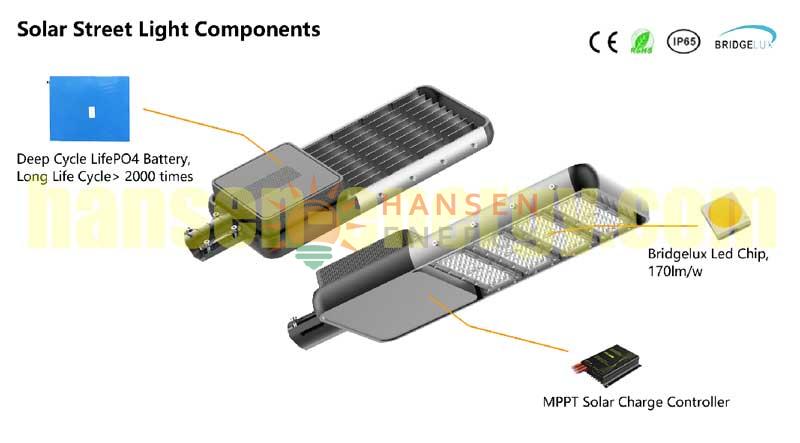MPPT & PWM in Solar Lighting Application
Solar lights can convert solar energy to electricity by photovoltaic panel and storage electricity into battery and discharge to LED lamp in night, which is a process of electric energy converted to optical energy, all these process implemented needs one controller, photo-voltaic controller.

PV controller not only convert electric energy from PV panel charge in battery, also has protection function of preventing overcharging, there are two kinds of controller in the market, PWM and MPPT controllers, the both has their own advantages and disadvantage and their application scenarios are different, so let’s study details,
1. PWM controller(Pulse-Width Modulation)
Int the early stage, PWM is a kind of common controller, its electric structure is relatively simple, constituted by a master power switch, a capacitance, a driver and protective circuit, actually it is like a switch connecting solar kits and battery, then solar kits voltage is pulled down closed to battery voltage.
(1)The controller has 3 phrases charging, boost charging, equalized charging and float charging.
Boost charging: charging rapidly when battery is in low voltage,with large current and relatively high voltage.
(2)Equalized charging: batteries voltage will be lowed down to a voltage value after boost charging. then batteries will be in a state of equalized charging, make sure voltage for every battery is uniformity.
(3)Float charging: when equalized charging is finished, battery also need some time standing silence down to a stable voltage, which is a float charging process, make sure battery keep a charging full and do not overcharged.
2. MPPT controller(Maximum Power Point Tracking)
This is kind of controller is more complicated and cost higher, usually its price is several times, even dozens of times for PWM controller, MPPT controller has capacity of adjusting input voltage for obtaining max energy from solar panel. Then convert to required voltage for battery,cutting direct connection between solar cells and battery, make sure high voltage solar cell charge for low voltage battery. It also has three phases, current content voltage charge, constant equalized charge, and constant float charge.
(1)MPTT current content voltage charge: MPPT charge will be adopted when voltage of battery is low, power from solar cell will be flowed to battery, when sunshine strength is hard, output power from solar cell will enlarged and charging current will reach a threshold value, then MPPT charging mode changed to a constant current charge, when sunshine turned to weaker, it returned to MPPT charging mode.
(2)Constant voltage equalized charge: battery is charging switched between MPPT and current content voltage charge for reaching a battery voltage to a saturation voltage, then changed to a constant voltage equalized charge phase, the battery current is gradually dwindling to 0.01C and turned to float charging phase.
(3) Constant voltage float charging:float charging to battery in a voltage slightly lower than that of constant voltage charge phase. This phase is mainly for supply electricity consumed by self-discharge.
Compared to PWM controller, MPPT controller has max power tracking function, which make sure solar cell power always be out as max power, it is not affected by temperature, so MPPT has higher charging efficiency than PWM controller.
Beside, PWM controller must be suitable to related system voltage, for example, 12V solar panel must use 12V PWM controller and battery, it is suitable for some kinds of 2KW micro off-grid system with simple constitution, easier wiring and lower cost.
MPPT controller has wider usage capacity, in general situation, it suits 12V-170V system and adjustable for 12~96V battery, suitable for above 2KW large off-grid system, higher efficiency and more flexible for kits configured.
